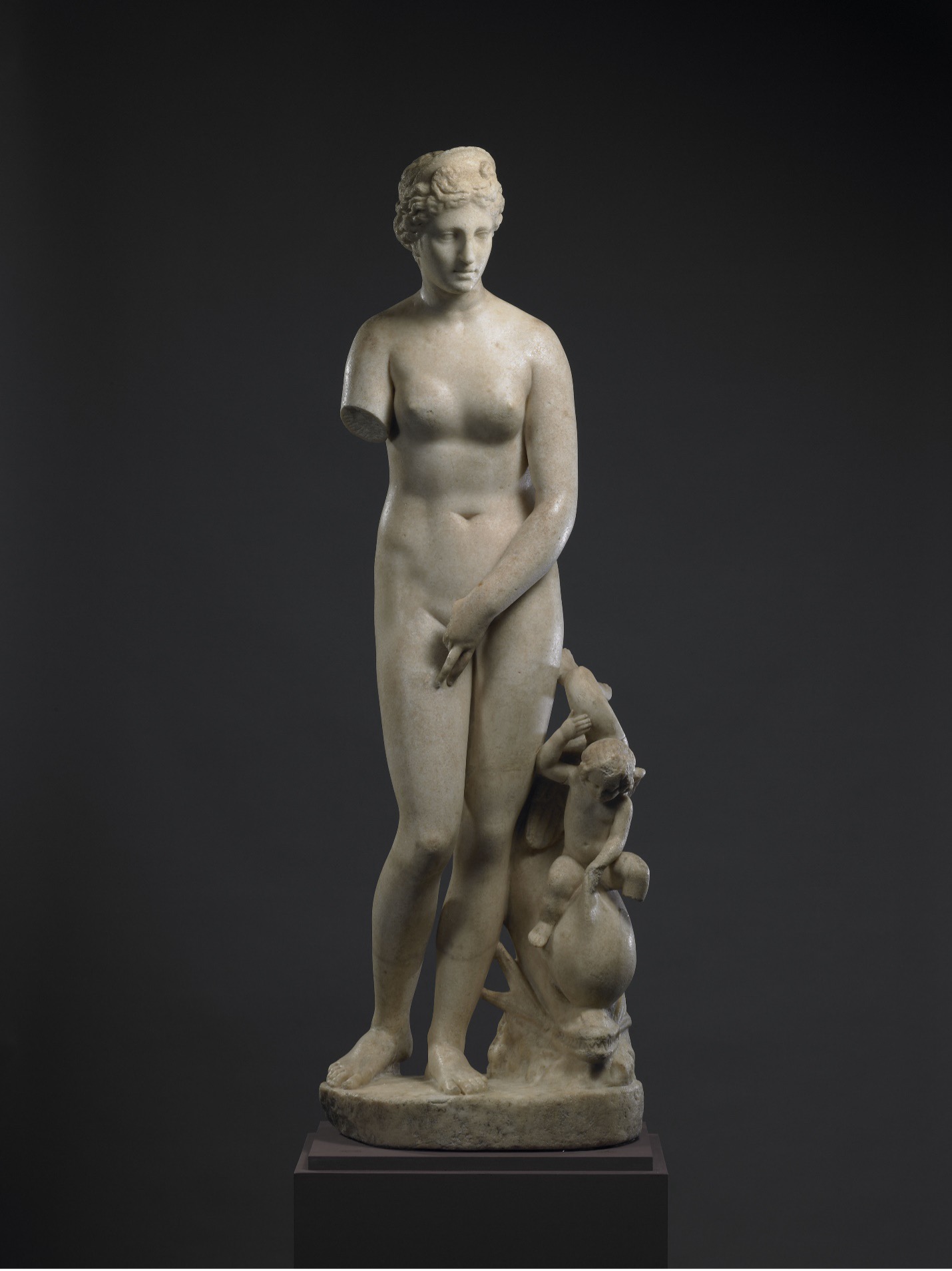

In June 2006, Carlos purchased a beautiful Roman marble sculpture of Venus. After nearly 2,000 years, the sculpture was in remarkably good condition except for one glaring omission—her head. While we are not strangers to having bodies without heads, Venus’ story is a bit different.
The sculpture had been consigned to Sotheby’s New York by socialite Elizabeth Copley Thaw who had acquired it in the 1950s from “a gallery on Park Avenue”. According to research done by Sotheby’s specialist Florent Heintz, the sculpture had been published by Charles Othon Frédéric Jean-Baptiste, Comte de Clarac in 1836-1837 as being in the collection of a Mr. Brunet of Paris. The publication included a drawing of the Venus, complete with her head. Heintz had a hunch that he had seen the missing head before. In December 2002, Sotheby’s New York had sold a head of a goddess that looked like the one in the 19th Century drawing. The head had been in the collection of New Jersey doctor John P. Warter who had acquired it from New York dealer J.J. Klejman in December 1964. Sotheby’s contacted the head’s new owner who agreed to bring it to New York to see if the head fit the body. With the match confirmed, the owner agreed to make the head available via private sale to the successful purchaser of the body – the Carlos Museum.
Once we had both the head and the body in our collection, Director of Conservation Renée Stein got to work. It was obvious the sculpture had been restored in the past. For example, a series of internal metal pins were used to repair the legs of the sculpture. Over time, metal will corrode, and such pins may develop stress fractures. To see what was going on inside the sculpture, it was taken to Delta Airlines’ Technical Operation Center at Hartsfield-Jackson Atlanta International Airport for X-ray. The internal pins were found to be structurally sound, and it was safer for the sculpture if the pins were left in place. The head was reattached using a stainless-steel rod anchored inside the sculpture with epoxy putty and plaster was used to fill the remaining gap around the neck. One of the many issue conservators consider when working on an object is the overall effect on the viewer. In this case, Venus came to us with only one finger on her left hand (her ring finger). To give the viewer a more complete sense of her hand, and to make sure it did not look like Venus was flipping the bird to our visitors, our conservation lab crafted a pinky finger.
Thanks to the sharp eye of Florent Henitz and the careful hands of Renée Stein, visitors can visit Venus with her head (and new pinky finger) in our galleries. What we still do not know is when and how she lost her head after 1836. The sculpture was published in 1873 and 1897, but the authors simply reference the Clarac drawing. I still can’t find anyone who saw her before she showed up without her head in New York in the 1950s. If only she could talk…the stories she could tell!




